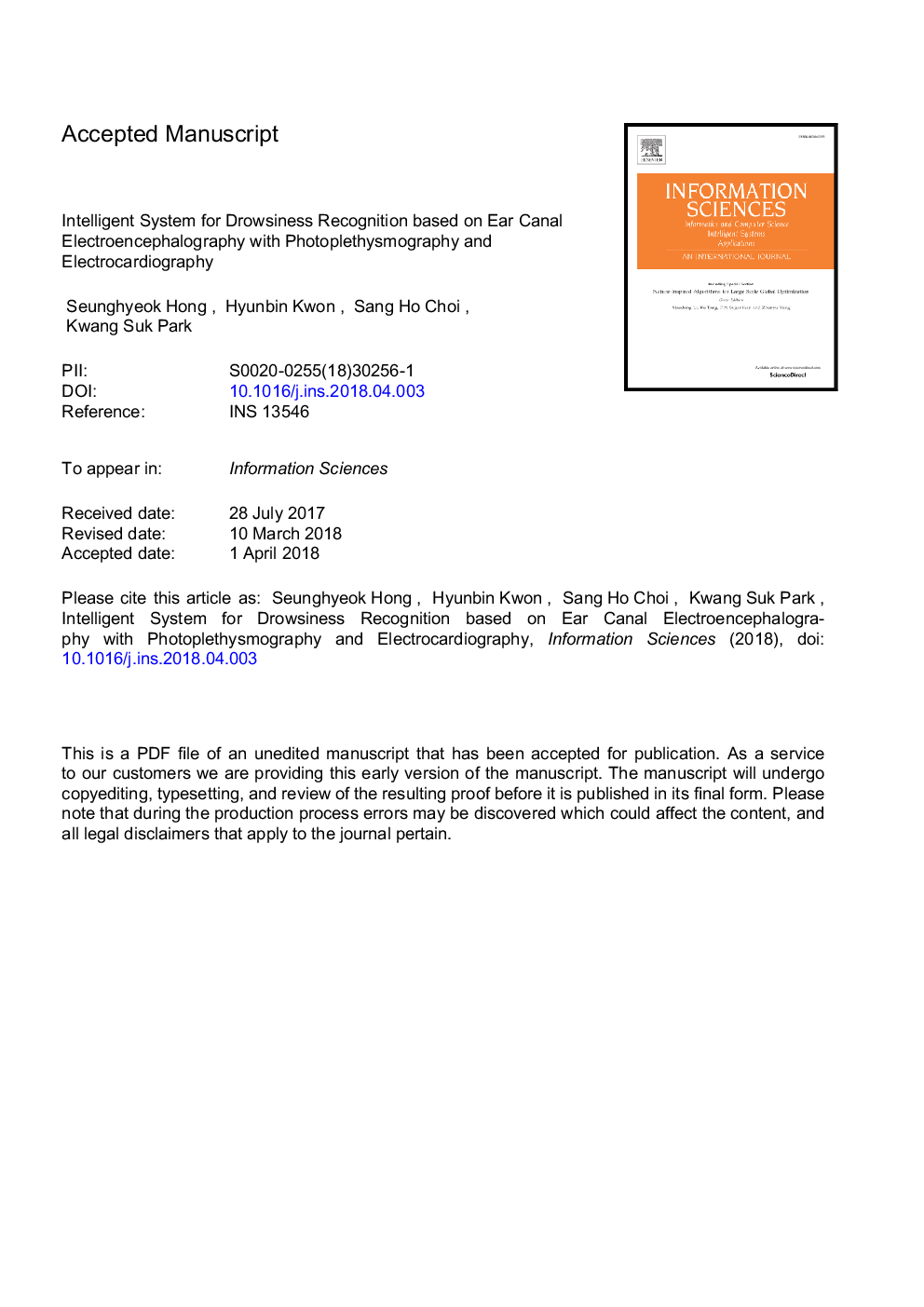| Article ID | Journal | Published Year | Pages | File Type |
|---|---|---|---|---|
| 6856415 | Information Sciences | 2018 | 41 Pages |
Abstract
We propose an intelligent system that can recognize drowsiness during daily life with the use of EEG measurements in the ear canal in combination with conventional photoplethysmography (PPG) and electrocardiography (ECG). The physiological signals for classification by machine learning were measured during the sustained attention task of simulated driving. The features were sorted by their degree of importance using three types of ranking filters and the combined information. The effect of the feature size of the biological signals on machine learning was evaluated by determining the mean squared error. The classifications were conducted with various datasets and dataset lengths that were obtained from the same biological signals considering the transitional traits of drowsiness. The statistical measures of the performance of the classifications using machine learning indicated that the system based on the ear canal EEG data and the physiological attribute data was excellent. The feature selection process with the composite ranking algorithm using multiple ranking methods improved the classification performance. The nonlinear features were highly selective among the physiological attributes for the intelligent recognition of drowsiness.
Related Topics
Physical Sciences and Engineering
Computer Science
Artificial Intelligence
Authors
Seunghyeok Hong, Hyunbin Kwon, Sang Ho Choi, Kwang Suk Park,
